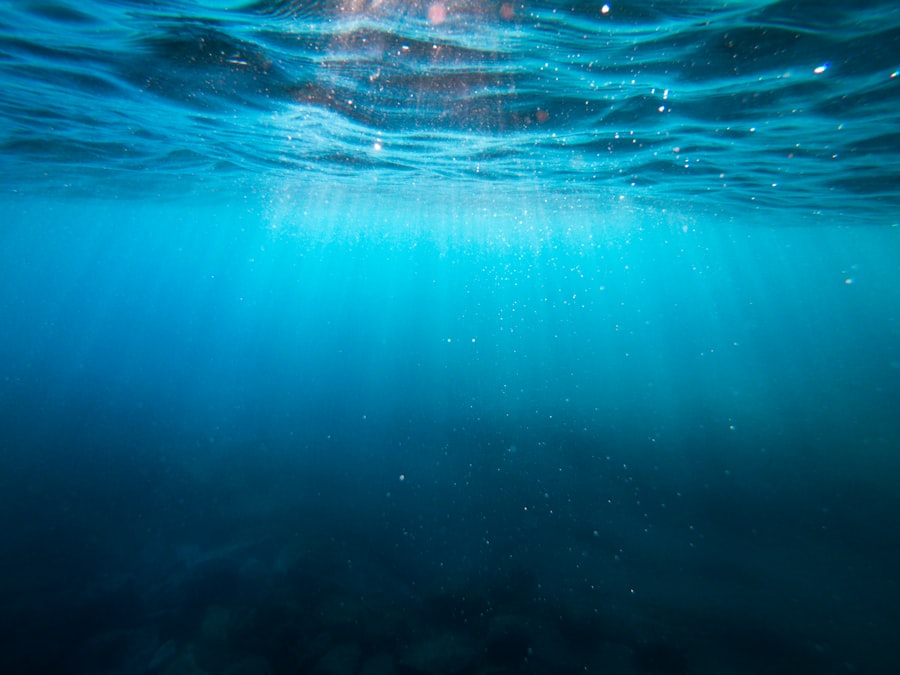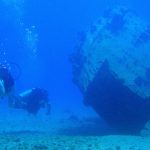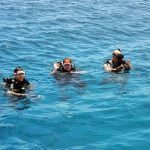Exploring the Shallow Seas: 8k8 Diving Adventure
Description
Shallow seas, often characterized by their vibrant ecosystems and stunning landscapes, are a treasure trove of natural beauty. These coastal waters, typically extending to depths of around 200 meters, are where sunlight penetrates the ocean, fostering an environment rich in life. The interplay of light and water creates a mesmerizing spectacle, with colors ranging from the deep blues of the ocean to the bright greens and yellows of coral reefs.
The clarity of shallow waters allows for an unparalleled view of the underwater world, where intricate patterns of coral formations and schools of fish dance in harmony. The aesthetic appeal of shallow seas is not merely visual; it also encompasses the sounds and sensations that accompany a dive into these inviting waters. The gentle lapping of waves against the shore, the soft rustle of seaweed swaying with the current, and the distant calls of seabirds create a symphony that enhances the experience.
As divers glide through these tranquil environments, they often find themselves enveloped in a world that feels both alien and familiar. The shallow seas serve as a gateway to understanding the delicate balance of marine ecosystems, where every organism plays a vital role in maintaining the health of the environment.
Key Takeaways
- Shallow seas are home to a diverse range of marine life and offer stunning underwater landscapes for divers to explore.
- 8k8 diving provides an exhilarating experience, allowing divers to witness the beauty of shallow seas in stunning clarity and detail.
- Shallow waters are teeming with vibrant marine life, including colorful fish, coral reefs, and other fascinating creatures waiting to be discovered.
- Safety is paramount when diving in shallow waters, and divers should be mindful of potential hazards such as strong currents and marine life encounters.
- Preserving shallow sea ecosystems is crucial for maintaining the delicate balance of marine life and ensuring the continued beauty and biodiversity of these underwater environments.
- When choosing gear for shallow water diving, it’s important to select equipment that is suitable for the specific conditions and depths of shallow seas, including snorkeling gear, wetsuits, and dive lights.
The Thrill of 8k8 Diving
Diving in shallow waters offers a unique thrill that is distinct from deeper dives. The term “8k8 diving” refers to a specific style of diving that emphasizes exploration and interaction with marine life at depths typically less than 30 meters. This type of diving is particularly appealing to both novice and experienced divers alike, as it allows for extended bottom times without the complexities associated with deeper dives, such as decompression sickness.
The thrill lies not only in the exploration but also in the accessibility of these underwater realms, making it possible for divers to engage with their surroundings in a more intimate manner. The excitement of 8k8 diving is amplified by the diverse range of activities that can be undertaken in shallow waters. From snorkeling alongside vibrant coral reefs to engaging in underwater photography, divers can immerse themselves in a variety of experiences.
The shallow depths allow for easy buoyancy control, enabling divers to hover effortlessly above the seafloor and observe marine life up close. This level of interaction fosters a deeper appreciation for the underwater world, as divers witness firsthand the intricate behaviors of fish and other creatures in their natural habitats.
Exploring Marine Life in Shallow Waters

Shallow waters are teeming with life, offering a rich tapestry of biodiversity that captivates divers and marine enthusiasts alike. Coral reefs, seagrass beds, and rocky shorelines serve as habitats for countless species, each contributing to the overall health of the ecosystem. For instance, coral reefs are often referred to as the “rainforests of the sea” due to their incredible diversity; they support approximately 25% of all marine species despite covering less than 1% of the ocean floor.
This vibrant ecosystem is home to colorful fish, crustaceans, mollusks, and various invertebrates, all coexisting in a delicate balance. In addition to coral reefs, seagrass meadows play a crucial role in shallow water ecosystems. These underwater plants provide essential habitat for juvenile fish and serve as feeding grounds for herbivorous species like manatees and sea turtles.
The presence of seagrass also contributes to water quality by stabilizing sediments and absorbing excess nutrients. As divers explore these environments, they may encounter fascinating interactions between species, such as cleaner fish removing parasites from larger fish or symbiotic relationships between clownfish and anemones. Each dive becomes an opportunity to witness these intricate connections and gain insight into the complexities of marine life.
Safety Tips for Shallow Water Diving
| Safety Tips for Shallow Water Diving |
|---|
| 1. Check the water depth before diving. |
| 2. Always enter the water feet first. |
| 3. Avoid diving in areas with submerged rocks or debris. |
| 4. Be aware of marine life and avoid touching or disturbing it. |
| 5. Stay within your limits and avoid diving alone. |
| 6. Ascend slowly and perform safety stops when necessary. |
While shallow water diving can be an exhilarating experience, it is essential to prioritize safety to ensure a positive experience. One fundamental aspect is understanding local conditions before entering the water. Factors such as tides, currents, and weather can significantly impact visibility and safety.
Divers should always check local forecasts and consult with experienced guides or dive shops to gain insights into potential hazards. Additionally, being aware of one’s own skill level and physical condition is crucial; divers should never push their limits beyond what they are comfortable handling. Another critical safety measure involves proper equipment usage and maintenance.
Divers should ensure that their gear is well-fitted and functioning correctly before embarking on a dive. This includes checking buoyancy control devices, regulators, and masks for any signs of wear or malfunction. It is also advisable to dive with a buddy system; having a partner not only enhances safety but also enriches the experience through shared exploration.
Regularly practicing emergency procedures, such as sharing air or performing controlled ascents, can prepare divers for unexpected situations that may arise during their underwater adventures.
The Importance of Preserving Shallow Sea Ecosystems
The preservation of shallow sea ecosystems is paramount for maintaining biodiversity and supporting human livelihoods. These environments provide essential services such as coastal protection, fisheries support, and tourism opportunities. However, they are increasingly threatened by human activities such as pollution, overfishing, and climate change.
Coral bleaching events caused by rising sea temperatures have devastating effects on reef health, leading to declines in fish populations and habitat loss. Protecting these ecosystems is not only vital for marine life but also for communities that rely on them for food and economic stability. Conservation efforts aimed at preserving shallow seas often involve collaboration between governments, non-profit organizations, and local communities.
Initiatives such as marine protected areas (MPAs) have been established worldwide to safeguard critical habitats from destructive practices. These areas allow ecosystems to recover while providing opportunities for sustainable tourism and education. Engaging local communities in conservation efforts fosters a sense of stewardship and responsibility towards their natural resources.
By promoting awareness about the importance of shallow sea ecosystems, we can inspire collective action to protect these invaluable environments for future generations.
Choosing the Right Gear for Shallow Water Diving

Selecting appropriate gear is crucial for ensuring comfort and safety during shallow water diving adventures. The first consideration should be a well-fitting wetsuit or drysuit that provides thermal protection while allowing for ease of movement. In warmer waters, a thinner wetsuit may suffice, while colder environments may necessitate thicker insulation or even a drysuit to keep divers warm during extended periods underwater.
In addition to thermal protection, divers should invest in quality masks and snorkels that offer clear visibility and comfort. A well-fitted mask prevents water from entering while providing an unobstructed view of the underwater world.
Fins are another essential component; choosing fins that match one’s diving style—whether it be snorkeling or scuba diving—can significantly impact propulsion efficiency and comfort. Furthermore, buoyancy control devices (BCDs) play a vital role in managing buoyancy during dives. A properly adjusted BCD allows divers to maintain neutral buoyancy while exploring shallow waters without expending excessive energy.
Additionally, carrying essential safety equipment such as dive knives, surface signaling devices, and first aid kits can enhance safety during dives. By carefully selecting gear tailored to individual needs and conditions, divers can maximize their enjoyment while minimizing risks associated with shallow water diving experiences.
If you’re interested in exploring the underwater world, you may also want to check out this article on best/2020/02/11/super-fast-charging-charge-master-2020/’>super fast charging with Charge Master 2020.
Just like how diving enthusiasts rely on their equipment to explore the depths of the ocean, having a reliable and efficient charging solution can make a big difference in your daily life.
FAQs
What is 8k8 Shallow sea diving?
8k8 Shallow sea diving is a type of diving that takes place in shallow waters, typically at depths of 8 to 8 meters (26 to 26 feet).
What are the benefits of 8k8 Shallow sea diving?
8k8 Shallow sea diving allows divers to explore marine life and underwater environments without the need for specialized equipment or extensive training. It is also a great way for beginners to experience diving in a safe and controlled environment.
What kind of marine life can be seen during 8k8 Shallow sea diving?
During 8k8 Shallow sea diving, divers can expect to see a variety of marine life such as colorful fish, coral reefs, and other underwater flora and fauna.
What equipment is needed for 8k8 Shallow sea diving?
Basic diving equipment such as a mask, snorkel, fins, and a wetsuit are typically used for 8k8 Shallow sea diving. However, scuba gear is not necessary for this type of diving.
Is 8k8 Shallow sea diving suitable for beginners?
Yes, 8k8 Shallow sea diving is a great option for beginners as it does not require extensive training or certification. It is a safe and accessible way for individuals to experience the underwater world.
What are some popular destinations for 8k8 Shallow sea diving?
Popular destinations for 8k8 Shallow sea diving include tropical locations with clear, shallow waters such as the Caribbean, the Maldives, and the Great Barrier Reef in Australia.





